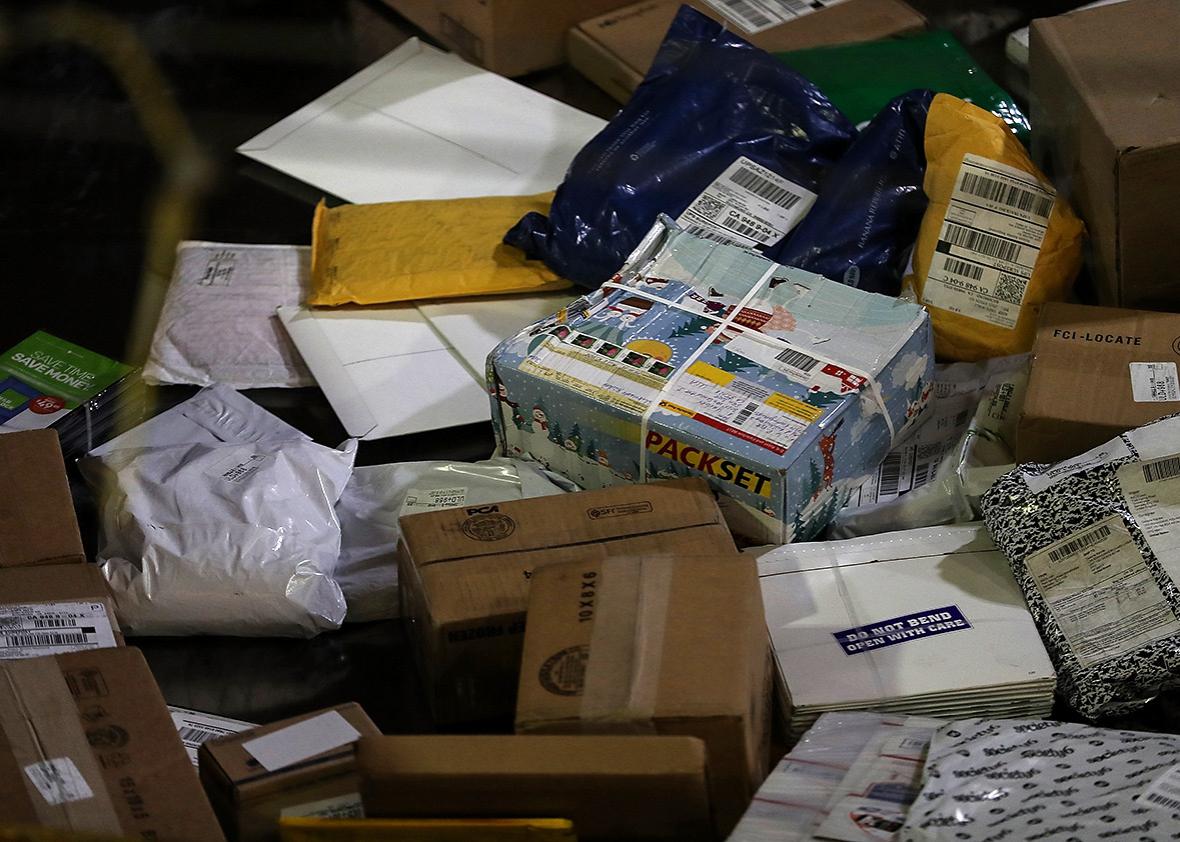I went a little crazy this Black Friday. Taking advantage of the retail holiday’s significant discounts, I ordered sweaters, shoes, and makeup from some of my favorite sites with the kind of abandon usually reserved for birthday dinners at spaghetti factories. I didn’t buy anything I didn’t want, but I felt free to go on a shopping spree, because I knew there was a good chance I’d end up returning a big chunk of my purchases. Buying online is easier than ever, but still tricky: Sizing and fit remain a gamble, colors don’t always match a site’s photography, and fabric quality is hard to predict. With a mostly online brand like Glossier (which has a single “showroom” in Manhattan), the only way to test out a product is to purchase it. E-commerce wouldn’t work without the returns that grease its gears. Because of the inherent risk in buying something you’ve never seen IRL, there would be fewer and smaller orders without them.
Returns, you’d think, would be the bane of online retailers, and it’s true that they’re a pain for them. It’s estimated that a third of online purchases are returned, and the rate creeps toward 40 percent for apparel—three to four times the average of returns at brick-and-mortar stores. Returns are the reason why an online store might actually make less money than a real-life store, even accounting for the latter’s rent, utilities, employee salaries, and so on. I wondered how companies might try to disincentivize returns, especially during the holidays, when the number of transactions spikes dramatically and the stakes for companies increase in turn. But it turns out that my Black Friday splurge, powered by the almost-guaranteed returns, is exactly what stores want out of their customers. In the long run, returns are a win-win for retailers and consumers alike. The more generous the return policy, the better it is for both ends of the transaction. And the more, I’ve realized, I’m ultimately willing to spend.
Ten years ago, when I began slowly growing my post-college wardrobe, I was limited by a grad student’s stipend and $5.95—sometimes even $12.95!—shipping fees for each order. I didn’t have a car, and most brands didn’t offer free returns via mail, so when I shopped online, I mostly stuck to stores that also had brick-and-mortar locations near my grad school so I could do my returns there. As e-commerce returns became smoother over the years—OK, and as I began earning more than a pauper’s wages once I stopped pursuing a Ph.D.—my shopping adventurousness grew too. Since shopping in person continues to be a man-made hell, I’ve spent the past decade piecing together a wardrobe of favorites, half-returned order after half-returned order.
It’s obvious what customers get from online returns, which are becoming ever breezier via free shipping both ways, a relatively paltry $6 to $8 shipping rate for returns, and/or the option of in-store returns. Sure, e-retailers bristle at having to eat the initial shipping cost, the possible return shipping cost, the restocking of items, and any customer support that goes into the process. But the conventional wisdom in the business world claims that retailers are ultimately rewarded by generous return policies that extend return windows and greet returners with friendly customer service. The longer items sit in a consumers’ homes, the more likely the “endowment effect” will cause them to consider them their own, or re-evaluate their initial judgment. You might have decided you didn’t like a new dress on Day 1, but after it’s lingered in your home for three weeks while you procrastinate a trip to the post office, you might update your opinion to, “Oh, it’s actually not that bad.” And a good return experience, especially one that allays negative feelings like guilt, can foster goodwill among customers.
I’ve found that to be true in my case. My “basics with a twist” (i.e., mostly boring) wardrobe is a perfect fit with national brands like Nordstrom and J.Crew, i.e., the kinds of companies that tend to boast the most customer-oriented return policies. (Granted, permissive return policies have become expected from large middle-class chain stores, which also enjoy higher markups than, say, Target or Walmart. And I acknowledge that a Black Friday spree is only available to those who can afford to casually run up $500 on their credit card, even if they return most of it.) Sometimes I’ll opt to pay a slightly higher price for an item at a familiar big-box store like Sephora instead of an independent Amazon seller because I want the peace of mind that comes from knowing that I can easily return the product if I don’t like it. (Not to mention mitigating the risk of buying fakes.) I bought a subpar Baggu tote last year from a mom-and-pop site instead of at Bloomingdale’s, where I’d first seen it, and I became increasingly bummed last winter that I couldn’t return it as the too-soft leather chafed and abraded against my jeans. So I don’t mind allowing my crusty heart to cultivate some brand loyalty to stores where the salespeople don’t bat an eye when I heave a box full of returns on the counter.
Yes, the ease of returns is probably making me buy more stuff—while also forcing me to spend more time at the post office than I’d like, not to mention make more trips to the mall, where I’m tempted to purchase even more things. Is late-stage capitalism playing me for a dupe with these seemingly nicey-nice return policies? Probably. But I’m fine with it. Commerce is, ideally at least, about two entities getting what they each want out of the other. E-commerce returns give me the infinite choices of the internet with the safety of the neighborhood chain store. In exchange, companies get out of me probably more money than they should. It’s a perfect capitalist love story.
